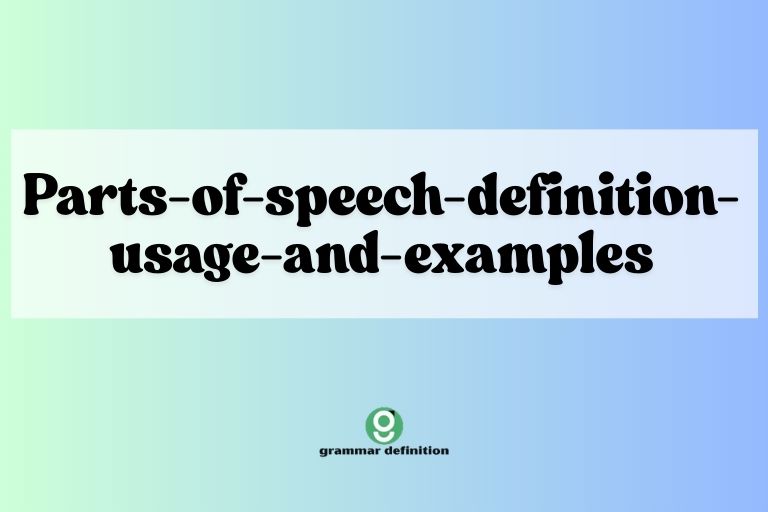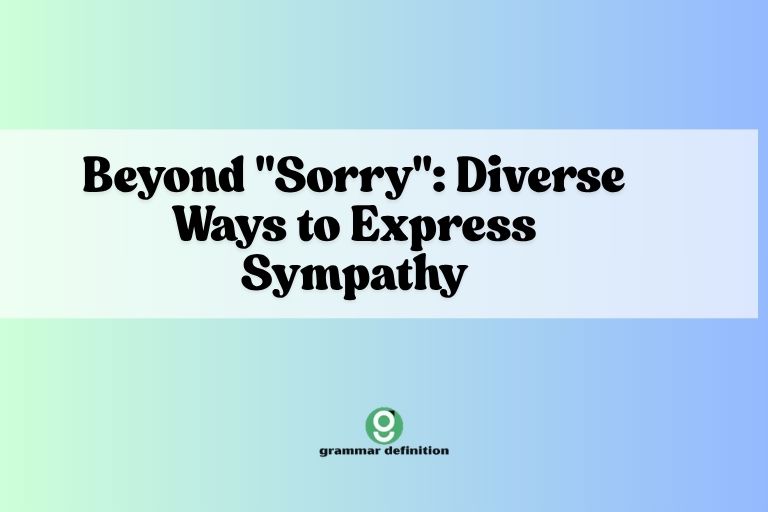Beyond ‘Welcome Back’: Creative Greetings in English

Returning after an absence, whether it’s from a vacation, a leave of absence, or even just a short break, deserves a warm and genuine welcome. While “welcome back” is perfectly acceptable, the English language offers a plethora of alternative expressions that can add nuance, personality, and sincerity to your greetings.
Understanding these alternatives not only enriches your vocabulary but also allows you to tailor your welcome to the specific situation and the person you’re addressing. This article provides a comprehensive guide to various ways to say “welcome back,” exploring their meanings, contexts, and appropriate usage.
This guide is perfect for English language learners, educators, and anyone seeking to enhance their communication skills and express themselves more effectively.
This comprehensive guide breaks down the nuances of welcoming someone back in English, offering practical examples and usage tips for everyday conversations and professional environments. By mastering these alternatives, you’ll be able to express your sentiments more precisely and create a more positive and welcoming atmosphere for those returning to your presence.
Table of Contents
- Introduction
- Definition of “Welcome Back”
- Structural Breakdown
- Types and Categories of Welcoming Phrases
- Examples
- Usage Rules
- Common Mistakes
- Practice Exercises
- Advanced Topics
- FAQ
- Conclusion
Definition of “Welcome Back”
The phrase “welcome back” is a standard greeting used to express pleasure or satisfaction at someone’s return to a place, situation, or activity after an absence. It is a versatile expression that can be used in both formal and informal contexts, conveying a sense of warmth and acceptance.
The phrase implies that the person’s presence was missed and that their return is appreciated.
In essence, “welcome back” serves as a verbal embrace, signaling that the individual is rejoining a community, team, or environment. It acknowledges their absence and reinforces their belonging.
The impact of this simple phrase can be significant, fostering a sense of inclusion and easing the transition back into the routine.
Structural Breakdown
The phrase “welcome back” is structurally straightforward. It consists of two words:
- Welcome: An interjection expressing pleasure or polite acceptance of someone’s arrival. It conveys a sense of hospitality and openness.
- Back: An adverb indicating a return to a previous place or condition. It signifies a movement from absence to presence.
The combination of these two words creates a concise and effective greeting that is easily understood and widely used. The simplicity of the structure contributes to its versatility and adaptability across various situations.
Types and Categories of Welcoming Phrases
While “welcome back” is a universal greeting, there are numerous ways to express the same sentiment with varying degrees of enthusiasm, formality, and sincerity. Categorizing these alternatives helps in choosing the most appropriate expression for a given situation.
General Welcomes
These are neutral and widely applicable phrases suitable for most situations. They convey a basic level of welcome without being overly enthusiastic or formal.
Enthusiastic Welcomes
These phrases express a high degree of excitement and joy at someone’s return. They are ideal for close friends, family members, or colleagues whose absence was particularly felt.
Sincere Welcomes
These emphasize genuine feelings of pleasure and appreciation for the person’s return. They are often used when the individual’s presence is particularly valuable or when their absence was due to challenging circumstances.
Formal Welcomes
These are appropriate for professional settings or when addressing individuals in positions of authority. They maintain a respectful and courteous tone.
Informal Welcomes
These are casual and relaxed phrases suitable for close friends, family members, or colleagues in a comfortable setting. They often incorporate slang or colloquial expressions.
Humorous Welcomes
These use humor to lighten the mood and express welcome in a playful manner. They are best used with individuals who appreciate lightheartedness and have a good sense of humor.
Examples
The following tables provide a range of examples for each category of welcoming phrases, illustrating their diverse applications and nuances.
General Welcome Examples
These examples are suitable for a wide range of situations and relationships.
| Phrase | Context |
|---|---|
| It’s good to have you back. | A colleague returning from vacation. |
| We’re glad you’re back. | Welcoming a team member after a sick leave. |
| Nice to see you again. | Greeting a regular customer after a long absence. |
| Welcome back to the team. | Welcoming someone who has rejoined a project. |
| Good to see you around. | Greeting a neighbor after a long trip. |
| We missed you. | Telling a friend they were missed. |
| It’s great to have you here again. | Welcoming a speaker to an event. |
| We’re happy to have you back with us. | Welcoming a volunteer after a break. |
| Glad you could make it back. | Greeting someone who had difficulty returning. |
| Welcome back to reality! | Humorous welcome after a vacation. |
| It’s good to see you safe and sound. | Welcoming someone back from a dangerous trip. |
| We’re pleased to have you back on board. | Welcoming an employee back to a project. |
| Good to have you back in the office. | Greeting a colleague after a business trip. |
| It’s great to see your face again. | Welcoming a friend you haven’t seen in a while. |
| We’ve been expecting you. | Anticipating someone’s return. |
| Welcome back to the grind. | Humorous welcome back to work. |
| It’s good to have you back in the loop. | Welcoming someone back to a project meeting. |
| We’re happy to have you back in action. | Welcoming back an athlete after an injury. |
| Glad to have you back where you belong. | Welcoming someone back to their hometown. |
| Welcome back to the family. | Welcoming a relative after a long absence. |
| It’s wonderful to have you back here. | Welcoming someone to a favorite place. |
| We’re delighted to have you back in our lives. | Welcoming a close friend after a difficult period. |
Enthusiastic Welcome Examples
These examples convey a high level of excitement and joy.
| Phrase | Context |
|---|---|
| You’re back! Awesome! | Greeting a close friend after a long trip. |
| We’re so thrilled to have you back! | Welcoming a valuable team member after a sabbatical. |
| It’s fantastic to see you again! | Greeting a favorite teacher after a break. |
| Yay, you’re back! | Informal greeting to a close friend. |
| We’ve been waiting for you! | Welcoming someone whose return was highly anticipated. |
| So glad you’re back! | Expressing joy at someone’s return. |
| Welcome back! We missed you terribly! | Telling someone how much they were missed. |
| It’s amazing to have you back! | Expressing excitement at someone’s return. |
| We’re over the moon to have you back! | Expressing extreme happiness at someone’s return. |
| You’re finally back! Hooray! | Celebrating someone’s long-awaited return. |
| We’re so excited you’re back with us! | Expressing enthusiasm at someone rejoining a group. |
| It’s a dream come true to have you back! | Expressing extreme happiness at someone’s return. |
| Welcome back! Let’s celebrate! | Suggesting a celebration for someone’s return. |
| We’re jumping for joy that you’re back! | Expressing extreme excitement at someone’s return. |
| It’s a party now that you’re back! | Humorous expression of excitement at someone’s return. |
| We’re ecstatic to have you back! | Expressing overwhelming joy at someone’s return. |
| You’re back! This is the best news ever! | Expressing extreme happiness at someone’s return. |
| We’re thrilled beyond words to have you back! | Expressing intense excitement at someone’s return. |
| It’s a miracle you’re back! | Expressing surprise and joy at someone’s return. |
| We’re doing a happy dance that you’re back! | Humorous expression of excitement at someone’s return. |
| You’re back! Our team is complete again! | Expressing the importance of someone’s return to a team. |
| We’re so pumped to have you back! | Expressing high energy and enthusiasm at someone’s return. |
Sincere Welcome Examples
These examples emphasize genuine feelings of pleasure and appreciation.
| Phrase | Context |
|---|---|
| We’re truly happy to have you back. | Welcoming someone after a difficult time. |
| Your return means a lot to us. | Expressing the value of someone’s presence. |
| We’ve really missed your contributions. | Welcoming a valuable team member. |
| It’s wonderful to see you back and healthy. | Welcoming someone after an illness. |
| We’re so grateful to have you back. | Expressing gratitude for someone’s return. |
| Your presence has been greatly missed. | Highlighting the impact of someone’s absence. |
| We’re relieved to have you back safe. | Welcoming someone after a dangerous journey. |
| It’s heartwarming to see you back with us. | Expressing genuine happiness at someone’s return. |
| We’re so glad you’re back in good spirits. | Welcoming someone after a period of sadness. |
| Your return has lifted our spirits. | Expressing the positive impact of someone’s return. |
| We’re deeply grateful for your return. | Expressing profound gratitude for someone’s return. |
| It’s a blessing to have you back. | Expressing gratitude and joy at someone’s return. |
| We’re touched by your return. | Expressing emotional appreciation for someone’s return. |
| Your return has brought us so much joy. | Expressing the happiness caused by someone’s return. |
| We’re truly blessed to have you back. | Expressing gratitude and joy at someone’s return. |
| Your return is a gift to us. | Expressing the value of someone’s presence. |
| We’re so fortunate to have you back. | Expressing gratitude for someone’s return. |
| Your return has made our day. | Expressing the positive impact of someone’s return. |
| We’re sincerely happy to have you back. | Expressing genuine happiness at someone’s return. |
| Your return has brought light back into our lives. | Expressing the positive impact of someone’s return. |
| We’re so thankful to have you back. | Expressing gratitude for someone’s return. |
| Your return is a source of great comfort to us. | Expressing the emotional support provided by someone’s return. |
Formal Welcome Examples
These examples are appropriate for professional settings or when addressing individuals in positions of authority.
| Phrase | Context |
|---|---|
| We are pleased to welcome you back. | A company welcoming an employee after a leave of absence. |
| It is our pleasure to have you return. | Welcoming a speaker to a conference. |
| We extend a warm welcome upon your return. | A formal letter welcoming someone back. |
| We are delighted to have you back with us. | Welcoming a board member after a break. |
| Your return is greatly appreciated. | Expressing appreciation for someone’s return. |
| We trust you had a productive leave. Welcome back. | Welcoming someone after a sabbatical. |
| On behalf of the team, welcome back. | A team leader welcoming a member. |
| We are pleased to see you back in good health. | Welcoming someone after an illness. |
| Your return is a valuable asset to the company. | Highlighting the importance of someone’s return. |
| We look forward to your continued contributions. Welcome back. | Expressing anticipation for future work. |
| The management welcomes you back. | A formal announcement of someone’s return. |
| We are honored to have you back in our presence. | Expressing respect and appreciation for someone’s return. |
| Your expertise has been missed. Welcome back. | Highlighting the value of someone’s skills. |
| We anticipate a successful collaboration upon your return. | Expressing optimism for future work. |
| The organization welcomes you back with open arms. | Expressing warmth and acceptance. |
| We are confident your return will benefit the company. | Expressing optimism for the future. |
| Your leadership has been missed. Welcome back. | Highlighting the value of someone’s leadership. |
| We look forward to your guidance upon your return. | Expressing anticipation for future direction. |
| The board of directors welcomes you back. | A formal announcement of someone’s return. |
| We are delighted to have you back in a leadership role. | Welcoming someone back to a position of authority. |
| We are pleased to acknowledge your return to the position. | Formal announcement of returning to a position. |
| We anticipate your valuable input going forward. Welcome back. | Expressing anticipation for future contributions. |
Informal Welcome Examples
These examples are casual and relaxed, suitable for close friends and family.
| Phrase | Context |
|---|---|
| Hey, you’re back! What’s up? | Greeting a friend after a vacation. |
| Back in the house! | Informal greeting for a family member. |
| Look who’s back! | Playful greeting for a friend. |
| Welcome back, buddy! | Greeting a close male friend. |
| So, you decided to show your face again? | Humorous greeting for a friend. |
| Back from the dead? Just kidding! Welcome back. | Humorous greeting for a friend. |
| The prodigal son/daughter returns! | Humorous greeting for a family member. |
| Good to have you back, pal! | Greeting a close friend. |
| Missed ya! | Informal greeting expressing that someone was missed. |
| Welcome back, superstar! | Playful greeting for a friend. |
| Hey there! Glad you’re back! | Casual and friendly greeting. |
| Sup! You’re back! | Very informal and casual greeting. |
| Yo! Welcome back! | Informal and friendly greeting. |
| Back in action! | Greeting someone returning to an activity. |
| Look what the cat dragged in! Just kidding! Welcome back! | Humorous greeting for a friend. |
| So, you finally made it back? | Humorous greeting for a friend. |
| Welcome back, dude! | Informal greeting for a male friend. |
| Welcome back, sis! | Informal greeting for a sister or close female friend. |
| Welcome back, bro! | Informal greeting for a brother or close male friend. |
| Good to see you, man! | Informal greeting for a male friend. |
| Welcome back, fam! | Informal greeting for a family member or close friend. |
| Welcome back, partner! | Informal greeting for a close friend or colleague. |
Humorous Welcome Examples
These examples use humor to lighten the mood and express welcome in a playful manner.
| Phrase | Context |
|---|---|
| So, you decided to come back after all? | Greeting a friend with playful sarcasm. |
| Did you miss us too much? | Humorous greeting implying someone was missed. |
| Welcome back! Don’t leave again, okay? | Playful warning not to leave again. |
| We almost forgot what you looked like! Welcome back. | Humorous greeting about someone’s long absence. |
| You’re back! Did you bring souvenirs? | Humorous greeting asking for souvenirs. |
| Welcome back! Now get back to work! | Humorous greeting back to reality. |
| So glad you’re back! Who’s doing the dishes now? | Humorous greeting about chores. |
| Welcome back! Did you at least bring us something? | Humorous greeting asking for a gift. |
| You’re back! Did you learn anything new? | Humorous greeting questioning what was learned. |
| Welcome back! We didn’t burn the place down while you were gone. | Humorous greeting about the state of things. |
| So, what kind of trouble did you get into while you were gone? Welcome back! | Humorous greeting implying someone was mischievous. |
| You’re back! Did you bring back any interesting diseases? Just kidding! | Humorous greeting with a playful jab. |
| Welcome back! Did you miss our sparkling personalities? | Humorous greeting about one’s own personality. |
| You’re back! We managed to survive without you. Barely. | Humorous greeting about surviving someone’s absence. |
| Welcome back! Did you at least get a tan? | Humorous greeting about getting a tan. |
| So, you decided to grace us with your presence again? Welcome back! | Humorous greeting with a touch of sarcasm. |
| You’re back! We were starting to think you eloped! | Humorous greeting about running away. |
| Welcome back! We almost had to replace you! | Humorous greeting about being replaced. |
| You’re back! The office was so quiet without you! (Too quiet?) | Humorous greeting about the office atmosphere. |
| Welcome back! Now, about those TPS reports… | Humorous reference to a work task. |
| You’re back! Did you at least bring back a good story? | Humorous greeting about having a story to tell. |
| Welcome back! We’re still trying to figure out how to use your coffee machine. | Humorous greeting about a shared item. |
Usage Rules
While the phrases listed above offer variety, it’s crucial to use them appropriately. Consider the following rules:
- Context is key: Choose a phrase that aligns with the situation and your relationship with the person. A formal setting requires a formal welcome, while a casual environment allows for more relaxed expressions.
- Know your audience: Be mindful of the person’s personality and sense of humor. A humorous welcome might not be suitable for everyone.
- Sincerity matters: Regardless of the phrase you choose, ensure it is delivered with genuine warmth and sincerity. People can often detect insincerity, which can undermine the welcome.
- Consider the reason for absence: If the person was absent due to a difficult situation (e.g., illness, bereavement), a more sensitive and sincere welcome is appropriate.
- Follow up with conversation: After the initial welcome, engage in conversation to show genuine interest in their well-being and experiences during their absence.
Common Mistakes
Here are some common mistakes to avoid when welcoming someone back:
| Incorrect | Correct | Explanation |
|---|---|---|
| “Welcome behind.” | “Welcome back.” | “Behind” is not the correct adverb to indicate a return. |
| “Glad to have you of return.” | “Glad to have you back.” | Incorrect prepositional phrase. |
| Using a humorous welcome in a formal setting. | Using a formal welcome in a formal setting. | Humor is inappropriate in professional environments. |
| Ignoring the reason for absence and offering an insensitive welcome. | Acknowledging the reason for absence and offering a supportive welcome. | Sensitivity is crucial when someone has been through a difficult time. |
| Being insincere or perfunctory in your welcome. | Being genuine and enthusiastic in your welcome. | Sincerity makes the welcome meaningful. |
| “Welcome again” (when it’s their first return). | “Welcome back.” | “Again” implies multiple returns. |
| “Happy to see you of return.” | “Happy to see you back.” | Incorrect prepositional phrase. |
| “Welcome in back.” | “Welcome back.” | Redundant and grammatically incorrect. |
| Using slang inappropriately in a formal setting. | Using standard English in a formal setting. | Slang is inappropriate in professional environments. |
| Forgetting to follow up with conversation after the welcome. | Engaging in conversation to show genuine interest. | Following up makes the welcome more meaningful. |
Practice Exercises
Test your understanding with these practice exercises.
| Question | Answer |
|---|---|
| 1. You’re welcoming a colleague back after a long sick leave. Which phrase is most appropriate? | It’s wonderful to see you back and healthy. |
| 2. You’re greeting a close friend after a vacation. Which phrase is most appropriate? | Hey, you’re back! What’s up? |
| 3. You’re welcoming a speaker to a conference. Which phrase is most appropriate? | We are pleased to welcome you back. |
| 4. You’re greeting a team member who has rejoined a project. Which phrase is most appropriate? | Welcome back to the team. |
| 5. You’re welcoming a family member after a long absence. Which phrase is most appropriate? | Welcome back, fam! |
| 6. You’re greeting a friend with a playful sense of humor. Which phrase is most appropriate? | So, you decided to come back after all? |
| 7. You’re welcoming a valuable team member after a sabbatical. Which phrase is most appropriate? | We’re so thrilled to have you back! |
| 8. You’re welcoming someone after a dangerous journey. Which phrase is most appropriate? | We’re relieved to have you back safe. |
| 9. You’re welcoming a board member after a break. Which phrase is most appropriate? | We are delighted to have you back with us. |
| 10. You’re greeting a male friend informally. Which phrase is most appropriate? | Welcome back, dude! |
| 11. You’re greeting a colleague after a business trip. Which phrase is most appropriate? | Good to have you back in the office. |
| 12. You’re welcoming a volunteer after a break. Which phrase is most appropriate? | We’re happy to have you back with us. |
| 13. You’re greeting someone who had difficulty returning. Which phrase is most appropriate? | Glad you could make it back. |
| 14. You’re welcoming someone back to their hometown. Which phrase is most appropriate? | Glad to have you back where you belong. |
| 15. You’re welcoming a close friend after a difficult period. Which phrase is most appropriate? | We’re delighted to have you back in our lives. |
Advanced Topics
For advanced learners, consider the following:
- Regional variations: Different regions may have unique expressions for welcoming someone back. Research these variations to expand your vocabulary.
- Cultural nuances: Different cultures may have different customs and expectations regarding welcomes. Be mindful of these nuances when interacting with people from diverse backgrounds.
- Figurative language: Explore the use of metaphors and similes to create more vivid and expressive welcomes.
- Nonverbal communication: Pay attention to your body language when welcoming someone back. A warm smile, eye contact, and a genuine tone of voice can enhance the impact of your words.
FAQ
Here are some frequently asked questions about welcoming someone back:
- Is “welcome back” always appropriate?
Yes, “welcome back” is generally appropriate in most situations. However, choosing a more specific and tailored phrase can enhance the sincerity and impact of your welcome.
- How do I choose the right phrase for a specific situation?
Consider the context, your relationship with the person, the reason for their absence, and their personality. Choose a phrase that aligns with these factors to create a meaningful and appropriate welcome.
- What if someone was absent due to a difficult situation?
Offer a sincere and supportive welcome, acknowledging their challenges and expressing your concern for their well-being. Avoid insensitive or humorous remarks.
- Is it okay to use humor when welcoming someone back?
Humor can be appropriate if you have a close relationship with the person and they appreciate lightheartedness. However, avoid humor if the person is sensitive or if the situation is serious.
- How important is nonverbal communication when welcoming someone back?
Nonverbal communication is crucial. A warm smile, eye contact, and a genuine tone of voice can enhance the impact of your words and convey sincerity.
- What should I say after the initial welcome?
Engage in conversation to show genuine interest in their well-being and experiences during their absence. Ask open-ended questions and listen attentively to their responses.
- Are there any phrases I should avoid when welcoming someone back?
Avoid phrases that are insensitive, sarcastic, or dismissive. Focus on expressing warmth, sincerity, and genuine interest in their return.
- How can I make my welcome more personal and meaningful?
Tailor your welcome to the specific person and situation. Acknowledge their absence, express your appreciation for their presence, and offer your support as they reintegrate into the environment.
Conclusion
Mastering alternative ways to say “welcome back” allows you to communicate more effectively and create a more positive and welcoming atmosphere for those returning to your presence. By understanding the nuances of different phrases and considering the context, your relationship with the person, and the reason for their absence, you can choose the most appropriate expression to convey your sincere welcome.
Remember that sincerity is key, and a genuine welcome can make a significant difference in someone’s transition back into a familiar environment.
By incorporating the diverse examples and usage rules provided in this article, you can enhance your communication skills and express yourself more effectively in a variety of situations. Practice using these alternative phrases in your daily interactions to become more confident and articulate in your welcomes.
Ultimately, a thoughtful and genuine welcome can strengthen relationships, foster a sense of belonging, and create a more
welcoming environment for everyone.






